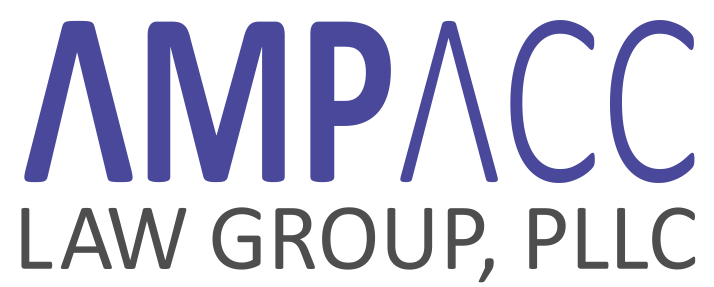On December 5, 2014, the Supreme Court granted a petition for writ of certiorari for Commil, USA, LLC v. Cisco Systems, Inc. The Supreme Court will hear the case on March 31, 2015. The Court will review whether a defendant’s belief that a patent is invalid serves as a defense to induced infringement under 35 U.S.C. § 271(b).
To prove inducement, a patent holder must prove that the inducer knew of the patent, and actively and knowingly caused a third party to directly infringe the patent. Thus, unlike other infringers, an inducer must have a specific mental state to be liable for inducement.
In this case, Commil sued Cisco, alleging infringement of a patent directed to a wireless communication system. After a complex series of jury trials, an Eastern District of Texas jury returned a verdict that Cisco induced infringement of Commil’s patents. Cisco appealed, alleging that the district court erroneously precluded Cisco from presenting evidence showing that it did not have the requisite mental state to induce infringement. In particular, Cisco alleged that it had a good faith belief that the patent was invalid.
On appeal, the Federal Circuit reversed, holding that Cisco’s “good faith belief” that the patent was invalid precluded a finding of inducement. Commil USA, LLC v. Cisco Systems, Inc., 720 F.3d 1361 (Fed. Cir. 2013).
As the Supreme Court held in Global-Tech Appliances, Inc. v. SEB S.A., an inducer must have “at least some intent” to cause infringement. Global-Tech Appliances, Inc. v. SEB S.A., 131 S. Ct. 2060, 2065 n.2 (2011). As a part of the intent inquiry, the accused must have had knowledge that the “induced acts constitute patent infringement” or was “willfully blind” to the infringing nature of the induced acts. Global-Tech, 131 S. Ct. at 2068.
In Commil, the Federal Circuit relied on a line of pre-Global-Tech jurisprudence to establish that, since an accused inducer’s good faith belief of noninfringement is relevant to rebut the intent element of inducement, a good faith belief of invalidity also rebuts intent. See, e.g., DSU Med. Corp. v. JMS Co. Ltd., 471 F.3d 1293, 1307 (Fed. Cir. 2006) (en banc) (finding a belief of noninfringement sufficient to support a jury verdict that a defendant lacked the intent for inducement).[1] The Federal Circuit observed “no principled distinction between a good-faith belief of invalidity and a good faith belief of non-infringement for the purpose of whether a defendant possessed the specific intent to induce infringement of a patent.” Commil, slip op. at 10. Accordingly, the court held that a good faith belief of invalidity, as well as noninfringement, could be relevant to rebut the intent element of inducement because “one cannot infringe an invalid patent.”
Judge Newman dissented, alleging that the majority’s ruling conflicted with accepted principles of tort liability. A mistaken tortfeasor is liable for committing a tort. However, in this case, a defendant mistakenly believing that a patent is invalid under U.S. patent law is not liable for a major type of patent infringement.
The Federal Circuit narrowly denied rehearing en banc, and Cisco appealed to the Supreme Court. Judge Reyna authored a strong dissent from the denial of rehearing en banc, accusing the majority of “fundamentally chang[ing] the operating landscape, much like waking up and unexpectedly finding that the sky is now green.” 737 F.3d 699, 703 (Fed. Cir. 2013) (denying rehearing en banc).
The Federal Circuit’s decision, if upheld, provides would-be inducers with a shield against inducement. For example, the court’s reasoning would allow companies to shield themselves from inducement by obtaining reliable invalidity opinion letters from counsel prior to any acts of inducement. On the other hand, allowing the good-faith belief of invalidity defense would make it more difficult for patentees to enforce their patents.
It is too soon to tell whether the Supreme Court will accept or overrule the Federal Circuit’s holding. The Solicitor General filed an amicus brief on behalf of the United States warning the Court about the drawbacks of affirming the Federal Circuit’s opinion for patentees. See Brief for United States as Amici Curiae, No. 13-896 (2014), available at http://sblog.s3.amazonaws.com/wp-content/uploads/2014/10/Commil-v.-Cisco-OSG-invitation-brief.pdf. The Solicitor General warned the Supreme Court that the Federal Circuit’s decision “has broad implications” and provides any defendant the opportunity to raise “good-faith belief in any potential defense to infringement liability” as a defense to inducement. Id. at 14.
[1] Interestingly, as the Federal Circuit noted in Commil, the Supreme Court at least partially overruled DSU Med. Corp. In DSU, the Federal Circuit found that the knowledge requirement of inducement is satisfied if the accused inducer “knew or should have known” that the induced acts are infringing. In Global-Tech, the Supreme Court modified this standard to “willful blindness.”
